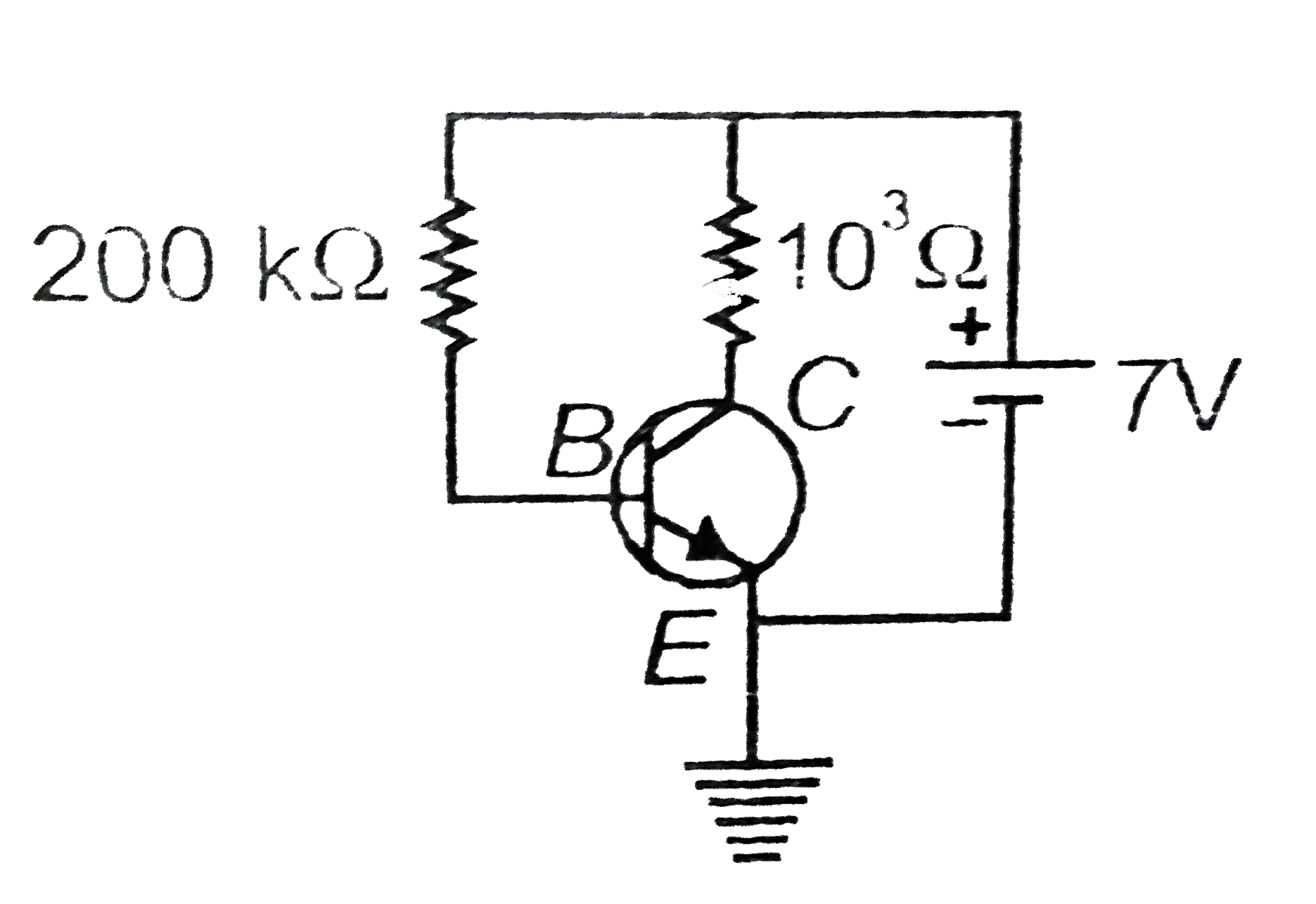For a transistor, in a common emitter arragement, the alternating current gain β is given by
ΔICΔIB]VCE
ΔIBΔIE]VBE
ΔIBΔIC]VCE
ΔICΔIE]VCE
The correct Answer is:A
To find the alternating current gain β for a transistor in a common emitter arrangement, we can follow these steps:
1. Understand the Configuration: In a common emitter configuration, the emitter terminal is common to both the input and output circuits. The input is applied between the base and emitter, while the output is taken between the collector and emitter.
2. Define the Parameters:
- Let IC be the change in collector current.
- Let IB be the change in base current.
- The collector-emitter voltage VCE is kept constant during this measurement.
3. Write the Formula for β: The alternating current gain β is defined as the ratio of the change in collector current to the change in base current:
β=ΔICΔIB
where ΔIC is the change in collector current and ΔIB is the change in base current.
4. Interpret the Result: This means that β indicates how much the collector current changes for a given change in base current, under the condition of constant collector-emitter voltage.
5. Select the Correct Option: Based on the definition, we can conclude that the correct option that matches our answer is the one that states β is the ratio of change in collector current to the change in base current at a constant collector-emitter voltage.
Final Answer:
The alternating current gain β in a common emitter arrangement is given by:
β=ΔICΔIB(at constant VCE)
- Let IC be the change in collector current.
- Let IB be the change in base current.
- The collector-emitter voltage VCE is kept constant during this measurement.
β=ΔICΔIB
where ΔIC is the change in collector current and ΔIB is the change in base current.
The alternating current gain β in a common emitter arrangement is given by:
β=ΔICΔIB(at constant VCE)
Topper's Solved these Questions
Similar Questions
The current gain of transistor in a common emitter circuit is 40. The ratio of emitter current to base current is.
View SolutionIn the given figure, a transistor is connected in common emitter configuration . If VBE=1V and current gain β=100, then the voltage across collector- emitter terminals VCE is
[VBE-voltage across base-emitter junction ]

View Solution
Knowledge Check
The potential difference across the collector of a transistor, used in common emitter mode is 1.5 V, with the collector resistance of 3kΩ, the emitter current is [β=50]
A0.70mAB0.51 mAC1.1 mAD1.9 mA
For a transistor working as common base amplifier, the emitter current is 0.72 mA. The. Current gain is 0.96. The collector current is
View SolutionConsider an n−p−n transistor amplifer in common-emitter configuration. The current gain of the transistor is 100. If the collector current changes by 1mA, what will be the change in emitter current?
View SolutionIn a common emitter transistor circuit, the base current is 40μA , then VBE is
View SolutionThe current of transistor in common emitter mode is 49. The change in collector current and emitter current corresponding to the change in the base current by 5.0μAm will be :-
View SolutionThe current of transistor in common emitter mode is 49. The change in collector current and emitter current corresponding to the change in the base current by 5.0μAm will be :-
View SolutionThe current gain of a transistor in a common base
arrangement in 0.98 . Find the change in collector current corresponding to a
change of 5.0 mA in emitter current . What would be the change in base current?
View SolutionThe current gain for a transistor used in common - emitter configuration is 98. If the load resistance be 1MΩ and the internal resistance be 600Ω , what is the voltage gain ?
View Solution
